Do You Need to Extract Data from PDF files?
Stop wasting time manually pulling data and start automating your workflow!
Managing data is an essential yet incredibly tedious task.
This is especially true if you rely on email as a receiving platform for important documents, such as sales receipts, invoices, shipping notes, and so on.
Remember, apart from pertinent data in your business operations, you also receive notifications from other services you use — from social media to smartphone apps. There’s also a high chance that you get dozens of newsletters from websites you don’t even recall visiting.
The good news is, you can now automate the data extraction process from emails and pdfs with the help of an email parser software. With Parserr, you could even retrieve data from a PDF attachment, which is the usual way of delivering crucial business documents.
Curious how this works? Then, let us show you how to use Parserr to extract PDF form data from emails:
How To Parse a PDF File with Parserr?
Follow These 3 Easy Steps To Automate PDF Data Capturing
Step 1: Setting Up Your Parserr Account
First things first, you need to set up a valid Parserr account in order to take advantage of its features.
The initial setup process also enables Parserr to assist with the creation of your first parsing rules. For this, you need to send a “test email” that reflects the specific type of messages you expect to parse data from.
You can send your test email to your Parserr inbox address as shown on the first setup page:
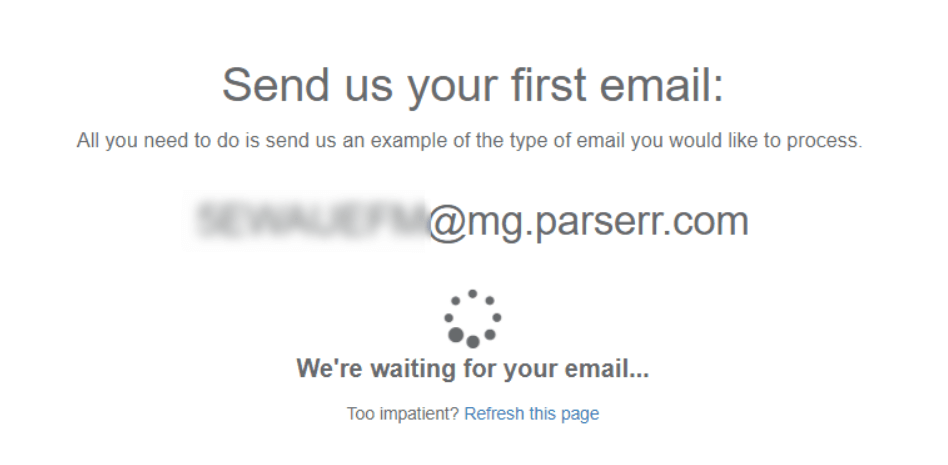
After sending the test email, give Parserr a few seconds to verify its reception. You can also manually refresh the page by clicking “Refresh this page.”
The next step involves specifying the part of the email that contains the data you want to extract. Since we want to extract data from attached PDF documents, you need to choose “Attachments” from the drop-down menu and click “Next.”
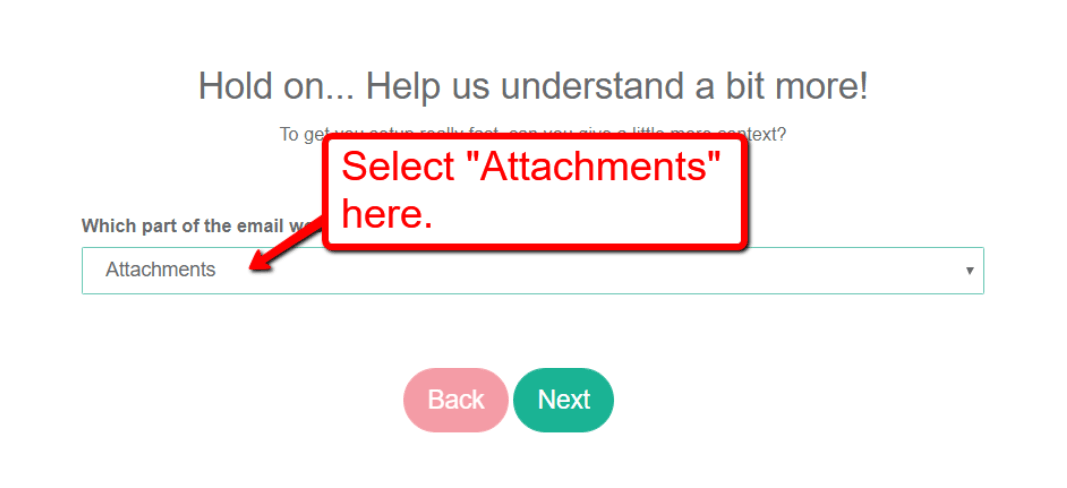
Select Workflow Integration
You will then be asked if you use Zapier or Microsoft Flow for automated workflows. If you use neither, select “No, none of them” and proceed to the next step.
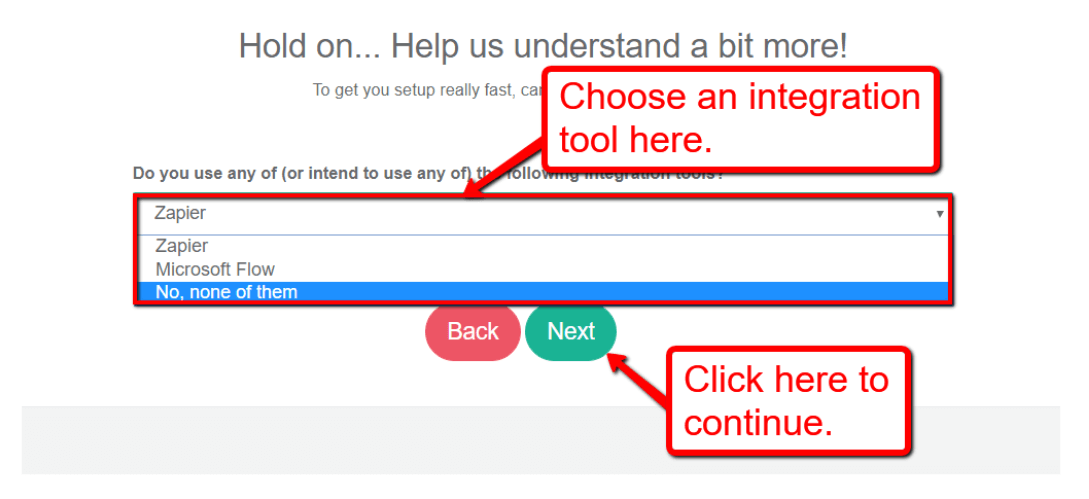
If the test email you sent contained an attachment, you’ll be asked to confirm the type of document uploaded. It can be an invoice, HR document, sales order, bank statements, and shipping information.
Suppose we forwarded an invoice document in the test email earlier. To optimize Parserr for similar emails in the future, let’s go ahead and pick the “Invoice/Receipt” option and click “Next.”
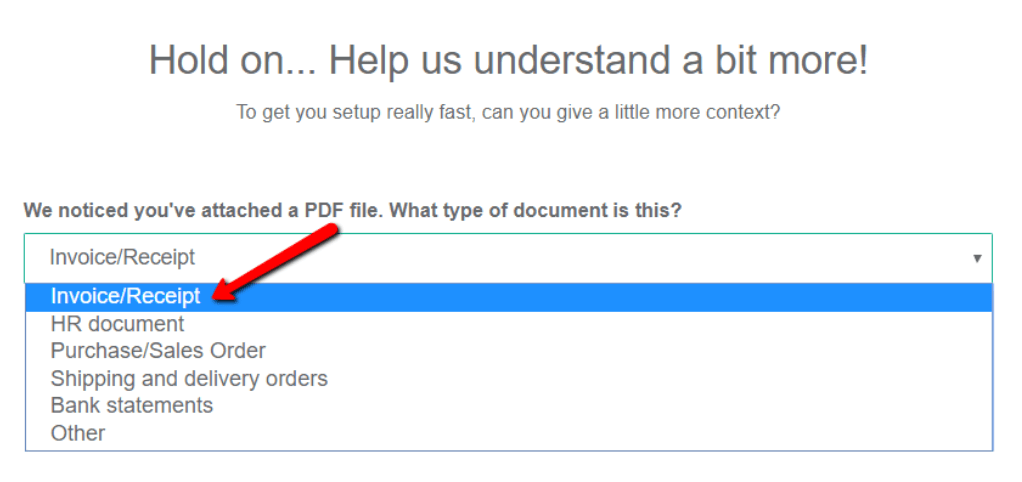
Remember, you can also pick “other” in case you don’t see the type of document you want to parse data from.
To finalize your new account, choose what you want to do with the data you’ll extract.
Parserr supports hundreds of external platforms where parsed data can be sent — from email marketing platforms like MailChimp to CRM software like Zoho. But to keep things simple, let’s just set to download data into an offline spreadsheet.
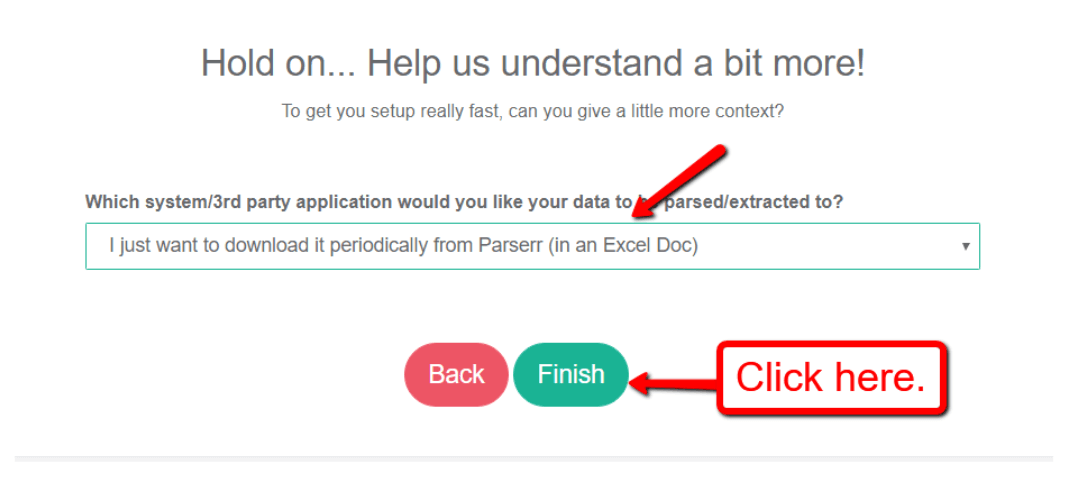
Step 2: Adding Parsing Rules to Extract PDF Data
After the initial setup process, Parserr immediately sends you to the “Rules” page where it all gets interesting.
Put simply, this is where you tell the platform where to check and what to look for in new emails.
In the topmost section of the page, select the email “attribute” or part that contains information. Be sure to select “Attachments” to have Parserr scan data from PDF documents.
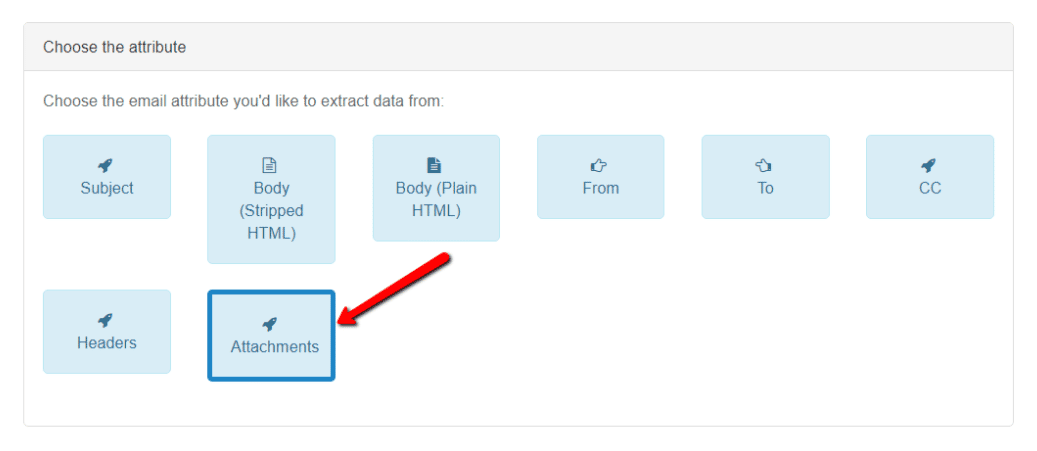
Upon making your selection, you should be able to see a preview of the attached PDF document in the “Initial data” field. For the sake of this guide, we used a sales invoice template in the test email, which contains the following information:
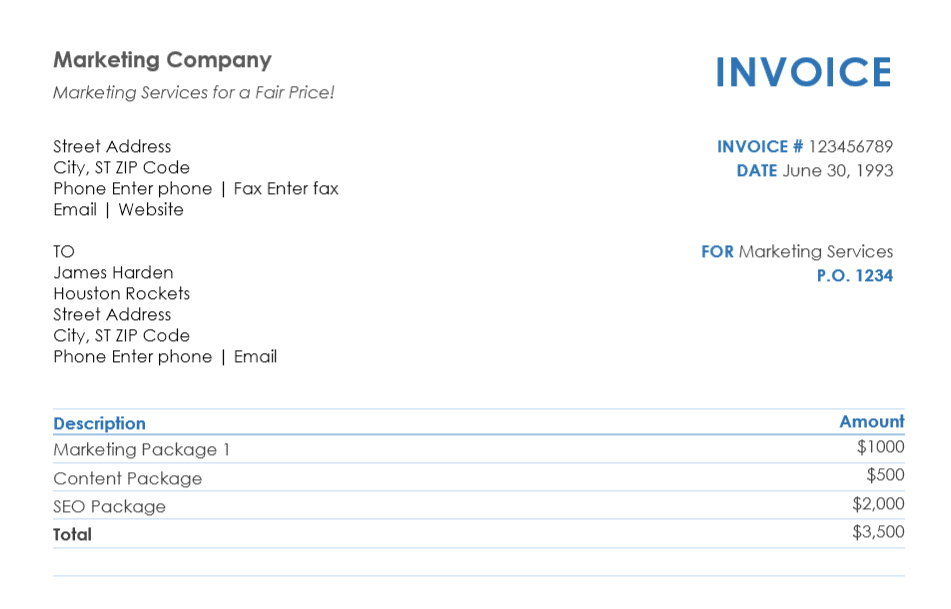
In this case, there are a couple of crucial details we can extract through Parserr: the invoice number, data, and the services to be paid.
To start creating parsing rules for these details, click the green “plus” symbol right below the initial data field.
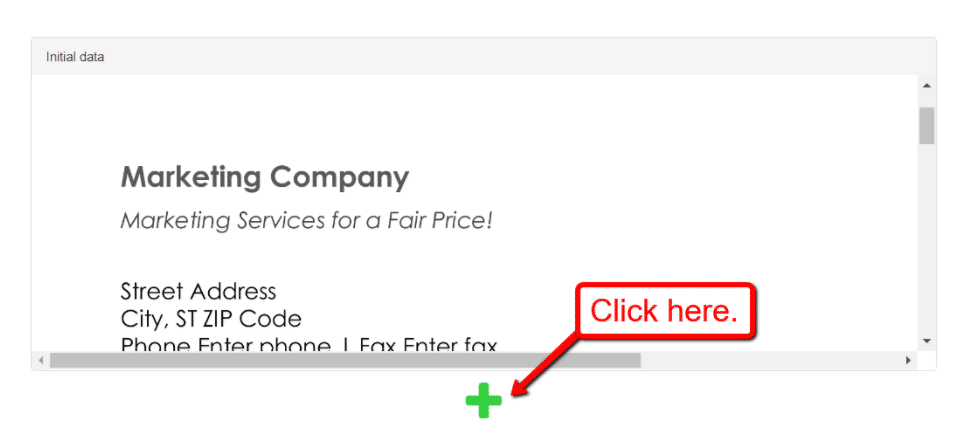
This will bring up a small window where you can set up “filters” that refine the information to be parsed. Since the chosen email attribute is an attachment, be sure to select “Files” from the “Rule Category” drop-down menu.
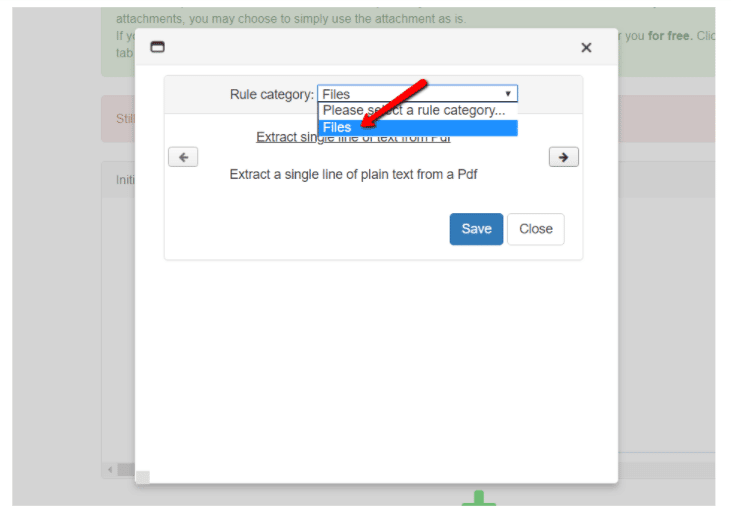
From there, you can choose between “Extract single line of text from PDF” or “Extract page text from PDF.” Since we only need a handful of information from the invoice, let’s go with the first option.
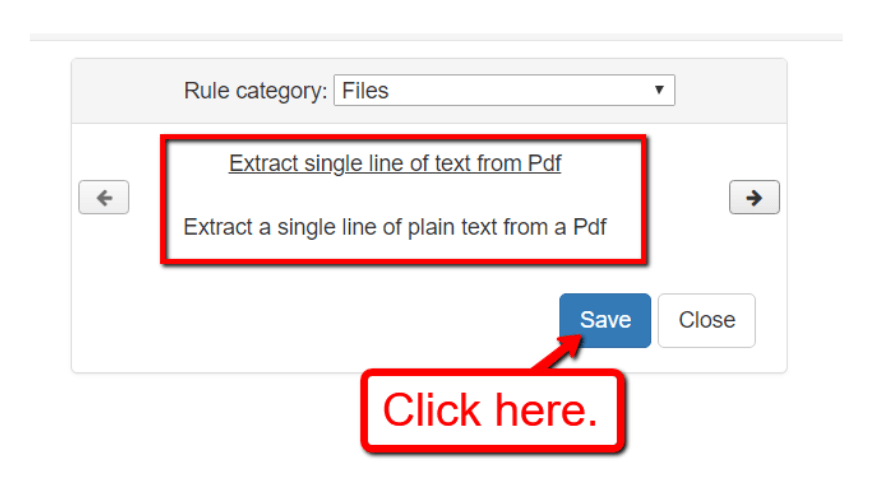
This will launch the Parserr “PDF Extraction” tool, which allows you to manually highlight a specific area of the PDF document. All you need to do is to drag the selection box over to the detail you want to extract.
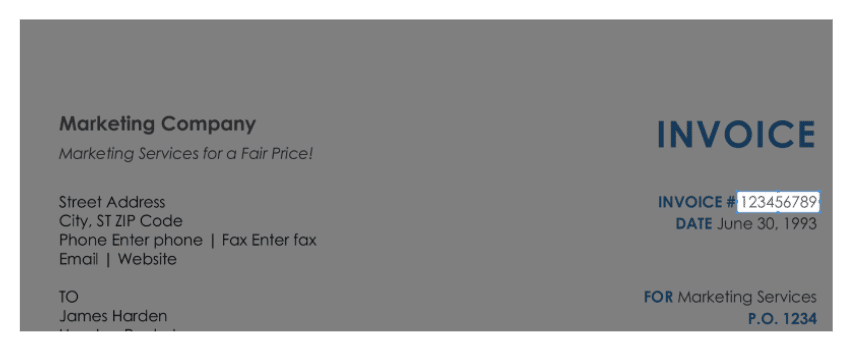
At the bottom of the PDF Extraction tool, enter a rule name and click “Confirm selection.”
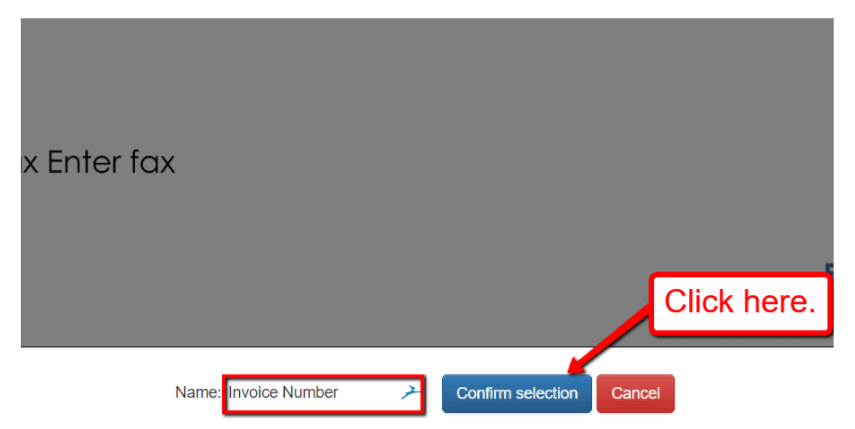
That’s it! You now know how to create parsing rules for PDF attachments.
Don’t forget to verify the parsed data by inspecting the “Content extracted from PDF” field. If you think the data is properly extracted, click “Save Rule” to return to the “Rules” page.
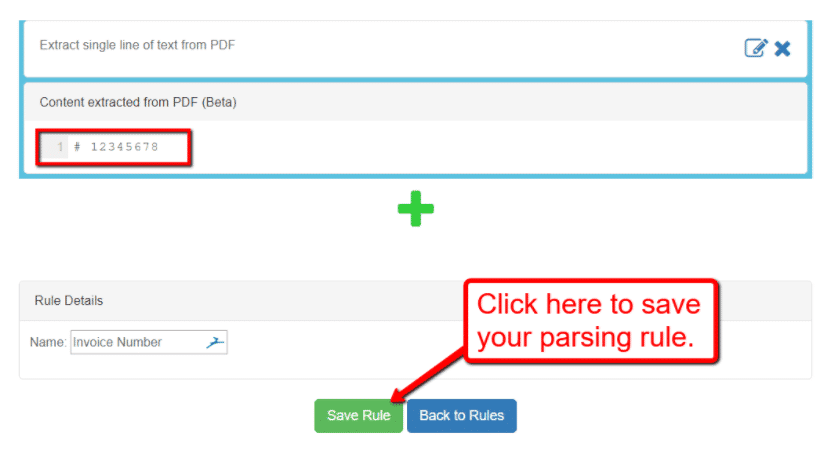
You can then repeat the entire second step for every piece of data you want to extract. Just remember to name them accordingly so you can identify your parsing rules once they accumulate in your “Rules” page.
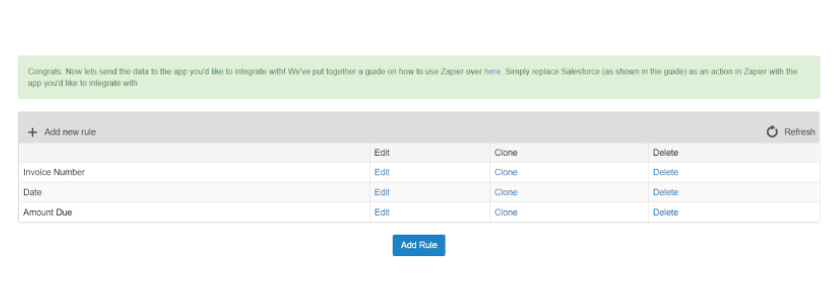
Step 3: Exporting Your PDF Data to Spreadsheet or Third-Party App
Creating parsing rules will take up the bulk of your time in Parserr.
The third step is making use of all the data you’ve extracted. With Parserr, you can funnel them to a third-party app via Zapier integrations — or you can download them directly as a spreadsheet document.
For the latter, go to the “Export” tab from the main menu.
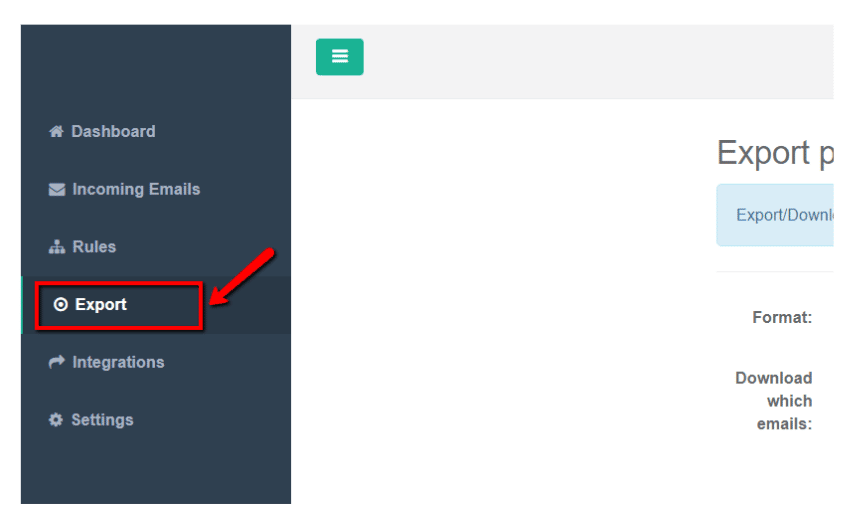
You will then be able to select a format as well as specify which parsed data to include by date. Once you’re happy with your settings, click “Download” now to complete the export.

For security, your parsed data will be sent to you via email instead of a direct download.
Remember, on top of the data you’ve retrieved through parsing rules, Parserr also extracts basic information, namely the sender’s email address, recipient (active Parserr inbox), date sent, and subject line.

Finally, you can automate the entire export process by specifying the data to be sent and the frequency of downloads — allowing you to save even more time managing your business data.
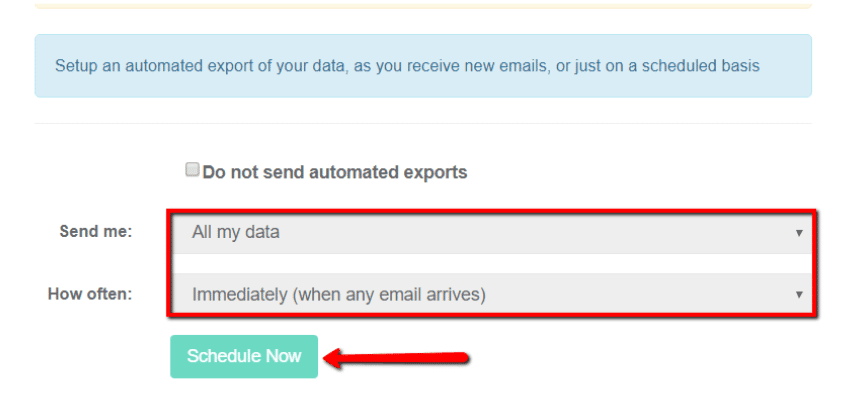
You can now successfully extract pdf data with Parserr
If you need help parsing email or pdf data, you can always visit our Parserr support page or you can contact us for more information.
Using an email parserr is a great way to save time and escape the stress of manually extracting data from important emails. PDF attachments are only the tip of the iceberg — you can also extract data from the actual email text with the right filters.
To know more about Parserr, check out this product comparison against other email parser applications in the market.










